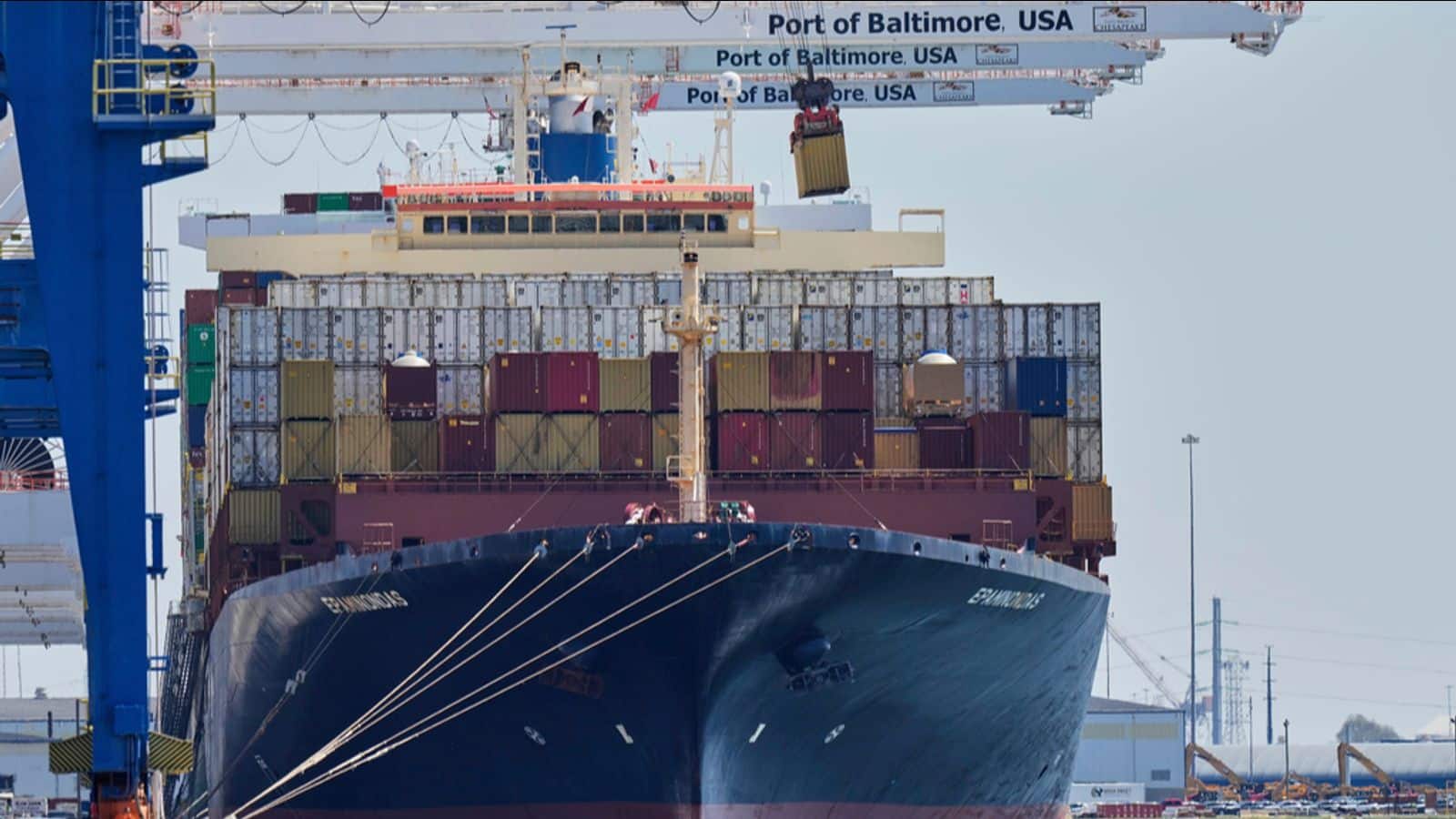Coal barge catches fire in Baltimore Harbor
Explosion at Baltimore Port Raises Safety Concerns

A coal-carrying bulk carrier, the M/V W Sapphire, exploded near the Port of Baltimore on Monday evening, reigniting serious safety concerns in the region. The explosion, which occurred around 6:30 PM EST, follows last year’s tragic collapse of the Francis Scott Key Bridge, highlighting ongoing vulnerabilities in the area’s infrastructure. Fortunately, all 23 crew members and two Maryland pilots aboard the vessel escaped unharmed.
Details of the Incident
Witnesses reported a loud boom and vibrations that shook homes across the Patapsco River, particularly in Anne Arundel County. The W Sapphire, which had just departed the CSX Coal Yard in Baltimore, experienced a hatch explosion that left visible damage consistent with fire and blast effects. The Baltimore City Fire Department responded promptly, deploying firefighters both on land and water, including their full-time fireboat, the John R. Frazier, which is equipped to handle maritime emergencies. Tugboats later escorted the damaged vessel to a safe anchorage near the Bay Bridge for a thorough investigation by the Coast Guard.
This incident comes in the wake of increasing fatalities among dock workers in the maritime industry. Just months ago, a crew member was killed aboard the Tidewater Polaris near New York, with details surrounding the death remaining undisclosed. Such tragedies underscore a troubling trend of profit-driven practices that prioritize corporate interests over worker safety and infrastructure integrity. The W Sapphire explosion is part of a broader pattern of preventable industrial disasters across the United States, including a recent explosion at the Clairton Coke Works near Pittsburgh that resulted in fatalities and injuries.
No injuries reported after explosion on ship near Key Bridge collapse site
Ongoing Safety and Regulatory Issues
CSX, a major rail operator in the eastern United States, has faced scrutiny for its role in various incidents, including the deaths of two conductor trainees earlier this year. In May, a collision between two CSX locomotives at the Curtis Bay Coal Terminal led to a significant diesel spill, contaminating the surrounding air. Despite these incidents, CSX received only minimal fines for air pollution violations following an explosion at the same coal pier in December 2021.
Recent labor agreements have also sparked controversy. CSX narrowly passed a five-year contract that offers annual wage increases starting at 4% in 2025, a stark contrast to the 24% wage increase imposed on railroaders by Congress in 2022. While union representatives have touted the contract as a victory, many workers view it as a wage cut amid ongoing inflation. The erosion of working conditions and the push for deregulation within the railroad industry raise alarms about the potential for future catastrophic incidents that could jeopardize worker safety and livelihoods.
As the investigation into the W Sapphire explosion continues, it is clear that a comprehensive reevaluation of safety standards and regulatory practices is urgently needed to protect both workers and the community at large.
